Downstairs at Corinthian Hall: Staff and Technology
Introduction
Text-to-speech Audio
While Corinthian Hall served as the home for the Long Family, the Lower Level (Basement) served many different functions, including providing an area for the staff to complete chores and conduct day-to-day business. The home held many technological advancements for the time that assisted the staff in their daily duties. One such feature was an elevator, and when it was installed in 1910, the mansion became the first private home west of the Mississippi River to have a commercial-sized elevator. The elevator demonstrated the immense wealth that the Long family held, and it was also a practical innovation which aided both residents and staff, along with other modern wonders of the age that were hidden away from view on the Lower Level. For example, the basement held the electrical system, a mechanical room for the pipe organ, and a soft water system for laundry.
Images
The sign located in the Lower Level of the Kansas City Museum
.jpg)
"The Junction" by James Fitzgibbon, displayed in the Lower Level hallway of the Kansas City Museum
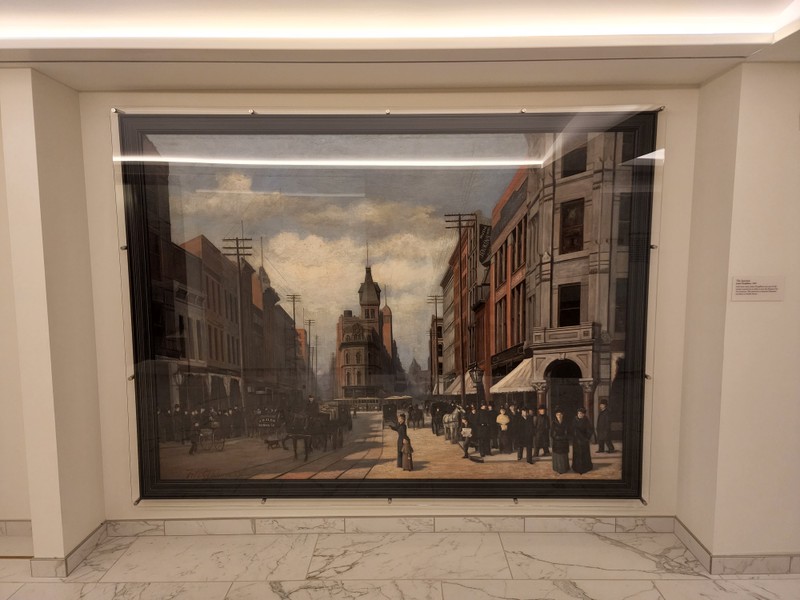
A look inside the cab of the original elevator, which was replaced in 2007.
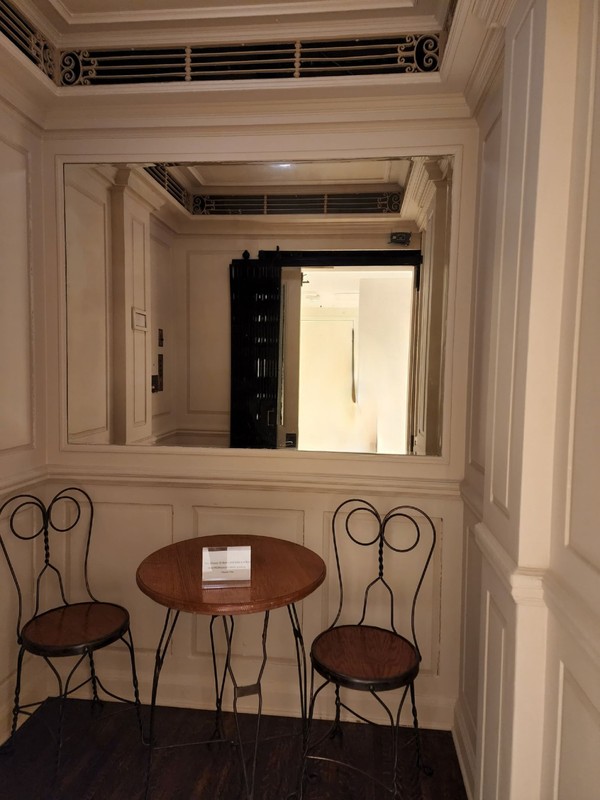
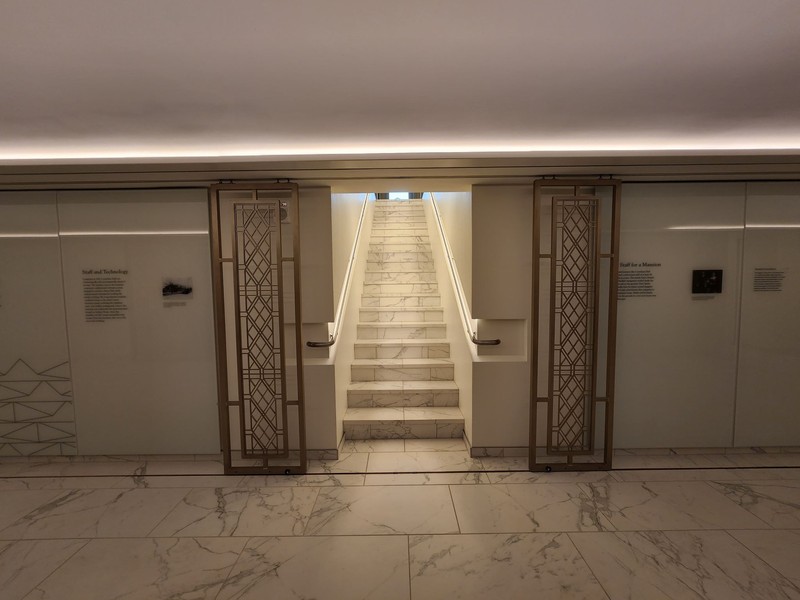
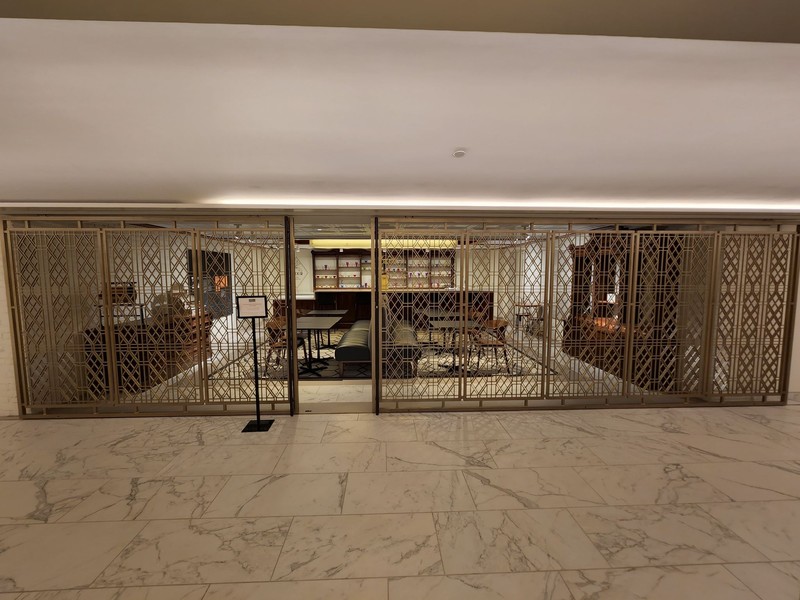
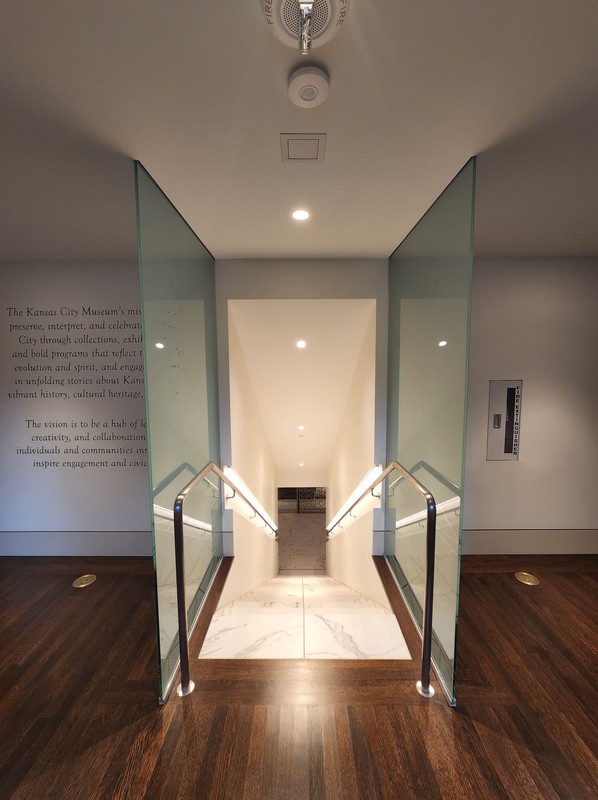
Backstory and Context
Text-to-speech Audio
Considering its immense size, the Long family home required well-trained staff to run operations at any given time. The staff consisted of as many as twenty-four people, the majority of whom were immigrants from Switzerland, Denmark, and Sweden. There were even staff members, such as Dave Smith, to train horses alongside Robert A. Long's daughter, Loula. Dave Smith and Loula worked together to develop Longview Farm near Lee's Summit, into a highly successful training ground for hackney ponies.
The east side of the basement was reserved for chores, while the west side was reserved for the family's entertainment. Such separation did not hinder the efficiency of the staff as they carried out day-to-day chores with the assistance of up-to-date equipment in the home. Designed by architect Henry Hoit, a soft-water system was installed for laundry using rainwater to wash the Long family's clothes. In addition to the advanced laundry system, the basement housed a mechanical room for organ pipes. In order to meet Mr. Long's standards for appearance, the wiring for the house was completely underground.
The most advanced feature in the house was the commercial elevator, the first to be added to a family home west of the Mississippi River. At the time of Corinthian Hall's construction, an elevator was a luxurious addition to any private home. A commercial-sized, cable-operated elevator was installed by the Otis Elevator Company, an innovative company since 1853. The Otis Elevator Company continues to this day. With renovations in the 1940s funded by the Women's Division, the Long family's home elevator continued to be maintained and operated until 2007, when Otis ceased making parts for this particular elevator. The elevator car is now parked in the basement, its doors always open, for patrons to observe its craftmanship and, if they choose, take photos of friends and family next to the first commercial elevator installed within a private home west of the Mississippi.
Sources
- Exhibits on View at Corinthian Hall, Kansas City Museum. Accessed March 17th 2022. https://kansascitymuseum.org/current-exhibits/.
- History, Otis. Accessed March 17th 2022. https://www.otis.com/en/us/our-company/history.
- Wall texts and object labels. Downstairs at Corinthian Hall, Kansas City Museum, Kansas City, Missouri.
